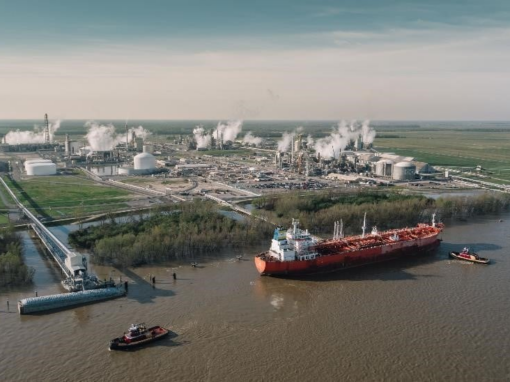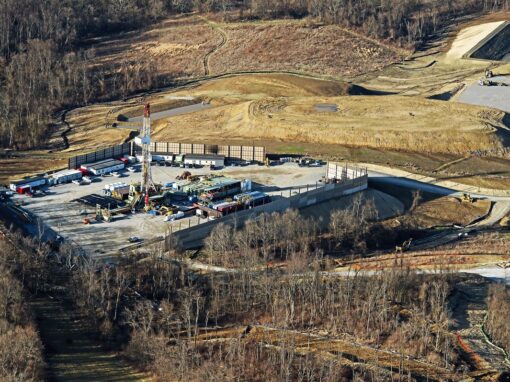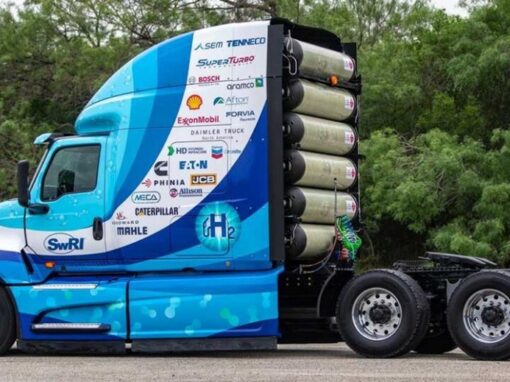May 12, 2025
By Charlie Sabgir
As Congress debates the future of clean energy tax credits, China rapidly advances its low and no-carbon energy development. Without adequate support, the U.S. risks ceding its leadership position in the global energy landscape. Over the last 5 years, China has gained an appreciable edge in the renewable hydrogen production supply chain by increasing its share of global electrolyzer manufacturing capacity from 5% to 60%. Already the world’s top hydrogen producer and consumer, Beijing has embraced a comprehensive strategy that combines regulatory structures and financial incentives to grow the industry domestically and internationally.
With a significant cost advantage in alkaline electrolyzers and fuel cells, China is well-positioned to exert greater influence in the global hydrogen economy. Backed by a vast industrial base, rising investments, and strong support from state and provincial governments, the nation’s rapid expansion makes the preservation and expansion of U.S. hydrogen incentives crucial.
The Energy Law, 30-60 Pledge, and the Implementation Plan
President Xi Jinping propounded a “30-60” vision for Chinese energy in the coming decades: peak carbon emissions by 2030 and carbon neutrality by 2060. Since this announcement, government officials have raised the ambitions for hydrogen in both domestic and international markets. Every province has incorporated hydrogen into its 14th Five-Year Plan (2021-2025), and it is now officially recognized as an energy source in the country’s Energy Law, rather than as a hazardous chemical. In doing so, the leadership hopes to foster consistent regulations and standards while nudging provinces to promote the industry.
Additionally, 33 new hydrogen policies were introduced across 24 provincial cities in November 2024. For example, Dalian province is offering 20 million yuan ($2.75 Million) in subsidies for hydrogen projects, complementing the Ministry of Finance’s 1.6 billion yuan ($220 Million) allocation for fuel cell vehicles in 2025. And on December 30, 2024, three major agencies—the Ministry of Industry and Information Technology, the National Development and Reform Commission, and the National Energy Association—issued an ‘Implementation Plan’ that targets large-scale industrial development, significant technological innovation, and an improved industrial chain. It focuses particularly on increased hydrogen use in sectors like metallurgy, ammonia and methanol synthesis, and refining. As the Chinese government seeks to boost domestic hydrogen production and consumption, it also aspires to consolidate its command over electrolyzer manufacturing.
Electrolyzer Manufacturing Dominance
China controls roughly 60% of the global electrolyzer manufacturing capacity, giving it an appreciable edge in the renewable hydrogen production supply chain. Beijing’s dominance, specifically in pressurized alkaline electrolyzers, affords the nation a vertically integrated supply chain with low costs. Chinese alkaline electrolyzers cost about ⅓ of the price of those from the U.S. and EU. This affordable investment, combined with sufficient quality, makes them highly attractive to project developers. It also presents a source of concern for original equipment manufacturers. With growing investment and a supportive regulatory structure provided by national and provincial governments, China is expected to maintain its leadership in the alkaline electrolyzer space through 2030.
Additionally, major Chinese solar and wind manufacturers are diversifying their portfolios through expansion into the electrolyzer space. LONGi Group, based in Xi’an, is a leading solar photovoltaic cell (solar PV) producer that entered the hydrogen sector in 2021. Since then, it has expanded its global footprint and formed partnerships with green hydrogen companies.
However, Beijing’s dominance in alkaline electrolyzer production does not extend to proton exchange membrane (PEM) technology, where U.S. and European companies maintain a competitive edge. PEM electrolyzers produce higher-purity hydrogen (99.999%) and operate more effectively with intermittent renewable energy sources—critical advantages for fuel cell vehicles and other advanced applications. This specialization provides Western manufacturers with a strategic foothold in the hydrogen market. Nonetheless, China’s growing investments in industrial production, coupled with its existing supply chain advantages for critical components, suggest it could rapidly close this technology gap and emerge as a global leader across electrolyzer types.
Industry Response: Navigating Challenges and Opportunities
Western hydrogen companies are taking different approaches to Beijing’s ascension, adjusting strategy in response to shifting market and political conditions.
Ballard Power Systems leaned into China’s hydrogen boom of the late 2010s, signing a $170 million deal in 2016 to produce fuel stacks domestically. Ballard saw steady financial success in the years that followed, culminating in a 2022 announcement of a $130 million manufacturing and R&D facility in Shanghai. However, as rapid changes in geopolitics and the Chinese market have reshaped the energy landscape, Ballard has pivoted West. In March 2024, the company announced plans for a $160 million Texas gigafactory, aiming to produce 3 GW of fuel cells annually by 2027. Ballard’s Texas investment strategically positions the company to benefit from U.S. hydrogen policies, highlighting the need for sustained government subsidies and infrastructure support.
In contrast, Indiana-based Cummins Inc. has expanded its presence in China in recent years through strategic partnerships. The company’s 2021 joint venture with Sinopec laid the foundation for China’s largest planned PEM electrolyzer facility, starting at 500 MW with plans to reach 1 GW. Construction began on the Foshan facility in 2023, signaling the continued strength of this partnership. These divergent approaches underscore the importance of a friendly regulatory environment and continued investment incentives in the U.S. hydrogen economy.
A Roadmap for the U.S.
China’s ascension in the global hydrogen economy presents a formidable challenge to U.S. efforts to assume leadership in the clean energy transition and reduce reliance on Chinese supply chains. Action is urgently needed to prioritize domestic manufacturing capabilities and ensure continued access to critical minerals. The U.S. can leverage its skilled workforce, innovative strengths, and natural resources to develop its own domestic hydrogen supply chain that counters Chinese dominance in the clean energy economy. Furthermore, programs like the 45V tax credit and the Regional Clean Hydrogen Hubs can play a vital role in scaling up production levels and reducing costs. Urgent, coordinated action between the private and public sectors will be key to U.S. energy security, achieving decarbonization targets, and sustained economic growth.



